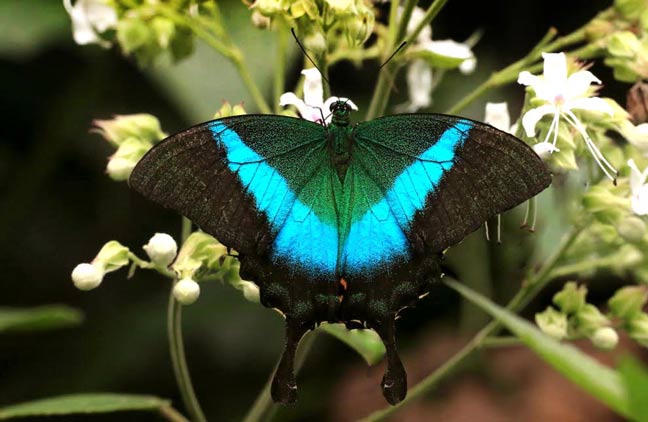There was a lot of discussion on designating national butterfly for India and state butterfly for the states in the recent past. In 2013 Maharashtra state designated Blue Mormon (Papilio polymnestor), the second largest butterfly of India as the state butterfly for the state. Subsequently in 2016, Karnataka Government recognised Southern Birdwing (Troides minos), the largest butterfly of India as the state butterfly. In a meeting of the state wildlife board under the chairmanship of Honorable Chief Minister Pinarayi Vijayan recommended Buddha Peacock (Papilio buddha) as the state butterfly for Kerala state.
In fact, a few butterfly had been shortlisted including The Malabar Tree Nymph (Idea malabarica), Malabar Rose (Pachliopta pandiyana), Malabar Banded Swallowtail (Papilio liomedon). But the Buddha Peacock was finally chosen, for its beauty and rarity. The Buddha Peacock is ranked as one the most beautiful butterflies of India. It has amazing iridescent colours and hues on the wing. The species is distinguished by its broad glossy green central band on the black upperside with a wing span of 90-100mm. Its is endemic to the Western Ghats and is recorded from Kerala, Karnataka and Goa. Recently it has also been sighted from the southernmost part of Maharashtra.
This butterfly is active immediately after the south west monsoon and is found during the months of August to December and January. Buddha Peacock is monophagous and is known to feed on Indian Prickly Ash Tree (Zanthoxylum rhetsa, Family: Rutaceae), popularly called Mullilam or Mullu murukku in Malayalam. Because of its beauty, the species is one of the most sought after butterflies in illegal trade. Hence it is included in the Schedule-II, Part (II) of the Indian Wildlife (Protection) Act of 1972.
The choice of Buddha Peacock as the state butterfly is most appropriate since the butterfly in narrowly endemic and their larval food plant is facing threat in its natural habitat, the midland laterite hillocks of Kerala.
